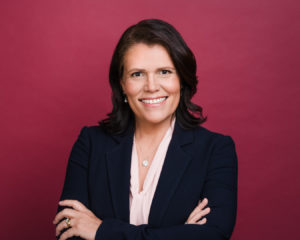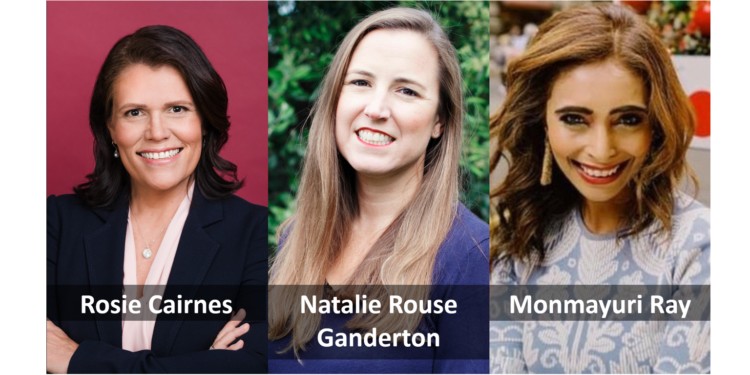The annual International Women’s Day is just around the corner. FutureCIO is running a series of interviews with women leaders from across industries and functions as our way of contributing to the gender equality movement.
This year, the call to arms by the IWD community is Choose to Challenge.
According to movement organisers, “we can all choose to challenge and call out gender bias and inequality. We can all choose to seek out and celebrate women's achievements. Collectively, we can all help create an inclusive world.”
Technology bias following the pandemic
Eliiza is a start-up that focuses on designing, building, scaling and optimising data science solutions. Natalie Rouse Ganderton joined the Melbourne-headquartered tech firmto head up its Sydney operations.

“Technology companies have an important role to play in thinking about using data for modelling in the wake of 2020 and not perpetuating any biases that may have worsened during this time,” said Rouse Ganderton.
She added that women are more likely to have experienced financial hardship during COVID. Any data that might reflect this explicitly or implicitly is at risk of putting them further behind. Companies need to know how to understand the shift in those indicators and be able to approach their data in a way that does not make it harder for people to get back on their feet.
“To develop robust and fair products, they also need a diverse development team. If you lack representation in your tech team of the people you are developing for, you will have blind spots.”
Natalie Rouse Ganderton
Backing thoughts with actions
Rouse Ganderton noted that if organisations are serious about improving diversity in technology, companies need to go out of their way to create diverse candidate pools, rather than plugging short-term gaps with people from within their existing networks.
She cited work at Mantel Group, where recruitment teams actively seek people out of different backgrounds, experience levels and industries.
“So, we have a robust candidate pool to select from when we need to hire. This takes time, but we trust that if we have the right talent, our high-performance reputation will ensure that the projects continue to flow in,” she added.
There also needs to be a focus on training and upskilling. Eliiza offers Associate roles that allow women who may be lacking experience to train across a skills rotation over 6 months and bring them up to the level required for a machine learning or data engineer, data scientist or similar.
“Our longest-serving data scientist arrived through this pathway, and our gender balance across the data science team is now 40% women or non-male identifying. We also have an internship for girls with no technology experience to undertake training in collaboration with Code Like a Girl,” she elaborated.
“If there are no pathways bridging the gaps between formal education and job description, you are limiting your choices significantly and missing an opportunity to help many more talented people into the field in the process.”
Natalie Rouse Ganderton
“Improving workplace culture is another major factor in improving diversity. Having a positive, welcoming culture that offers a safe space for people in the minority who may otherwise feel sidelined or intimidated is vital. This must be all-encompassing – from hiring, to benefits, work flexibility, communication, learning & development, and more,” she concluded.
Pulling off the sexiest job of the century

Monmayuri Ray, a solutions architect at GitLab concurred with Rouse Ganderton, adding that diversity in technology, or lack thereof, continues to contribute to critical skills shortages in Australia.
“As we shed the fatigue from the lockdown, it’s timely for those returning workforce participants to consider how their skills and experience gained from other sectors can contribute to our tech future,” she opined.
Declared the sexist job of the century, the role of data scientist has become highly coveted, both by employers and aspiring job seekers.
She observed that as demand increased, so too did the trend of working professionals deciding to make an abrupt career transition by jumping in to take crash courses based on prescriptive lists of skills needed in data science.
“While this has certainly fuelled greater interest and awareness in data, the data science lifecycle requires many more skills and roles beyond machine learning engineers. Becoming a data scientist isn’t necessarily the only or best way to be part of this future data-driven AI journey,” she added.
For Ray, a data scientist designs predictive models by applying machine learning and data analytics, but the effectiveness of the role would be lost without domain knowledge and the ability to communicate their insights.
She believed that young women (and men) who have been left feeling insecure and anxious about their ability to their future careers by the pandemic have an opportunity to apply their domain knowledge and secure their future beyond the current crisis.
“AI optimisation as a workforce strategy is imperative to realise the true potential of technology in helping humans make better decisions and solve problems faster. There needs to be a broader and deeper understanding of the role of data science by organisations to correct its misrepresentation as a professional field for young Australians or those in career transition. Coding languages and data principles are just one part of the puzzle but how technology will develop in the future requires a breakdown of the obstacles, barriers and biases in the IT workforce at the enterprise level.”
Monmayuri Ray
“Greater participation of different backgrounds, skills and experience is critical in helping us develop a more diverse and sustainable technology workforce for the future, where data and AI is central to every business vision,” she concluded.
Beyond the diversity in the workplace

Rosie Cairnes, regional vice president APAC at Skillsoft said that while COVID has led to many positive workplace reforms in some areas, globally it has disproportionately affected women, particularly in terms of job losses and caregiving responsibilities.
Even in normal circumstances, women tend to shoulder more domestic duties, and this has worsened during lockdowns.
Ariane Hegewisch, spokesperson for the Institute for Women’s Policy Research in the US said: “The real danger at the moment is that people are starting to associate women with childcare more strongly than before”. Women are currently at greater risk of drowning in responsibility and growing systematic inequities like a widened gender pay gap, more part time roles, fewer opportunities for promotion, financial hardship and more.
“We cannot allow increased workplace flexibility to become a double-edged sword. What we needed before the pandemic is more acute than ever. We need to rethink the cost of childcare. Workplaces need to step up with formalised work from home arrangements that support families and offer benefits such as parental leave for both parties. We need additional training and hiring initiatives targeted at supporting women, and workplaces need to address diversity and inclusion holistically through organisation-wide education that challenges deep-seated bias.”
Rosie Cairnes





